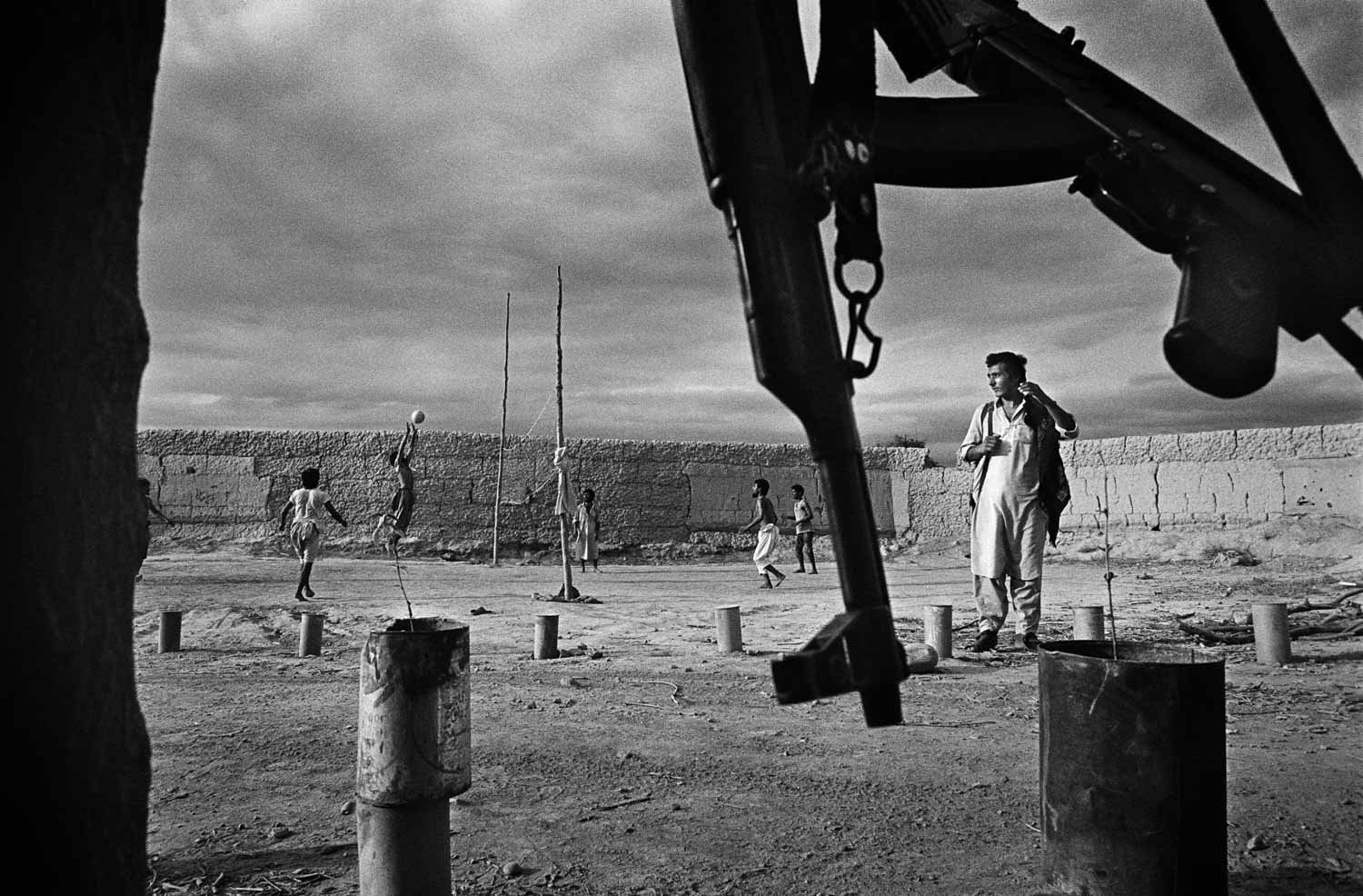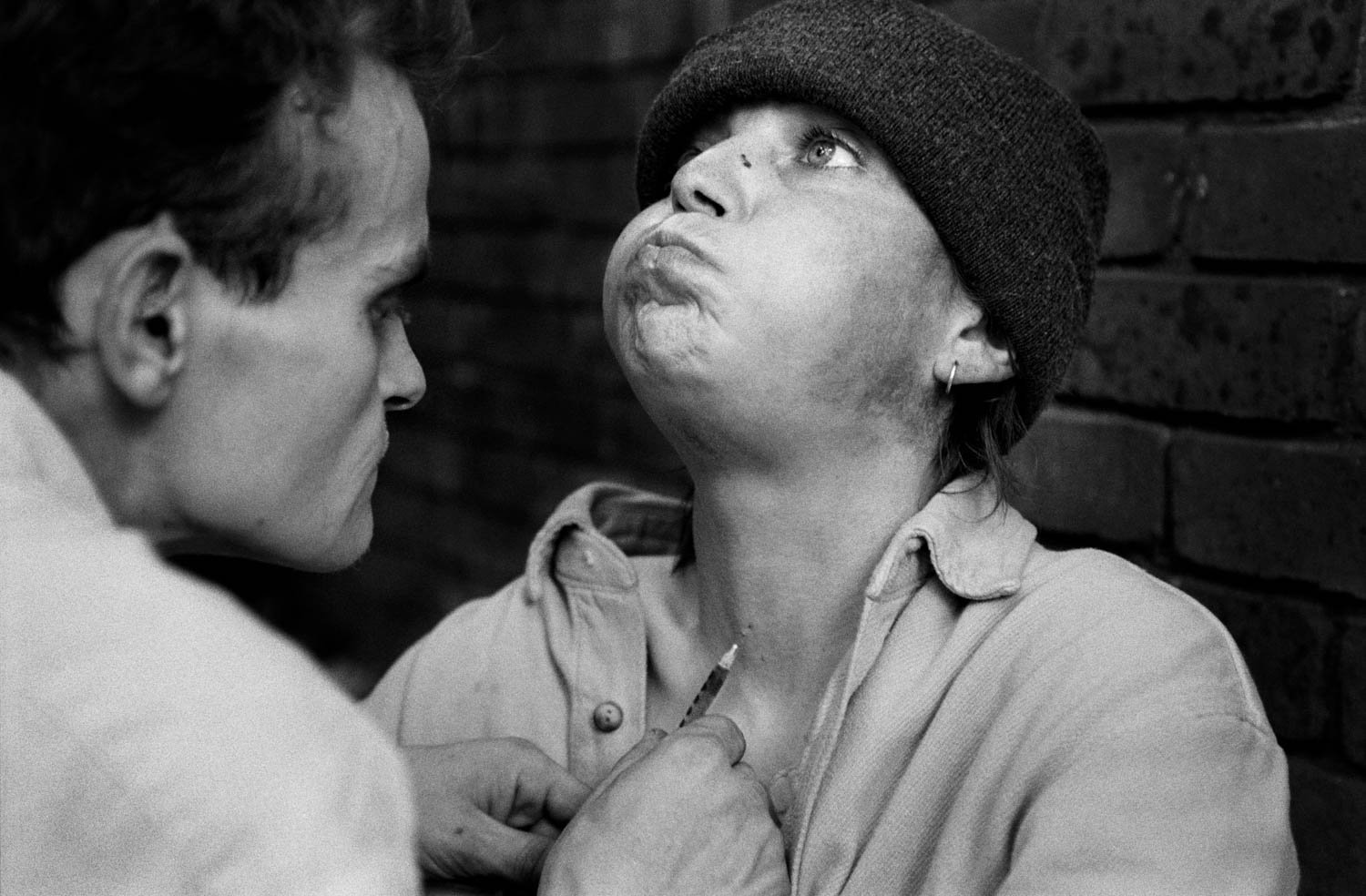The Life and Evolution of a Reportage Photographer
A night in the morgue of Medellin in Colombia. From a project documenting the war on drugs.
The Evolution of Reportage Photography: A Personal Journey
Reportage photography is more than just capturing images; it is a pursuit rooted in the profound responsibility to bear witness and tell the truth. Reportage photography is a discipline that transcends mere observation—it is an act of participation in the unfolding of history.
Reportage photographers serve as the eyes of the public, bringing attention to the often unseen or ignored aspects of human experience. They navigate the delicate balance between documenting reality and honouring the dignity of their subjects, striving to reflect the truth without sensationalism or bias.
A commitment to authenticity and ethical integrity defines the reportage photographer. They are not simply passive onlookers but active participants in documenting moments that hold the potential to inform, challenge, and even change societal perspectives. In an era where images are ubiquitous and the line between fact and fiction often blurs, the true reportage photographer remains steadfast in their mission: to capture the essence of the human condition with honesty, to elevate common narratives, and to hold a mirror to the world’s most pressing issues.
From the iconic works of Don McCullin, Mary Ellen Mark, James Nachtwey, Susan Meiselas, and Henri Cartier-Bresson to the evolving landscape of digital media, reportage photography continues to adapt, but its core principles remain unchanged. It’s a genre that demands not just technical skill but a deep empathy and an unwavering dedication to truth. My journey as a reportage photographer has been shaped by these values, guiding me from the conflict zones of my early career to the diverse projects I undertake today.
Mujahideen playing volleyball, Afghanistan. This image was taken on my very first trip to Afghanistan when I was 22.
The Allure of Reportage Photography
My path into reportage photography was driven by a restless curiosity and a longing to witness the world’s unvarnished truths. Inspired by the compelling works of photographers like Robert Capa, Philip Jones Griffiths, W. Eugene Smith, and Dorothea Lange, I was captivated by their ability to distill complex human experiences into single, striking images. In 1994, fuelled by these influences, I packed a battered Canon and a few rolls of Tri-X film and journeyed to Afghanistan—a place that promised both danger and discovery.
Amid warring factions and a landscape marked by conflict, I came to understand that reportage photography was not just about capturing dramatic scenes, but about immersing oneself in the fabric of people’s lives. It required more than just a camera; it demanded patience, empathy, and the willingness to become a quiet observer in moments of profound human experience. The power of a photograph, I learned, often lies in the subtleties—the unguarded moments that reveal the deepest truths when no one is posing for the lens.
An inmate with tuberculous in a Russian prison, Colony 33. Shot on assignment for the Sunday Times Magazine.
Early Influences and Key Reportage Projects
A significant influence on my early career was Nick Danziger’s Danziger’s Travels, which chronicled his own journey through conflict zones, including Afghanistan. It was Danziger’s trip to Afghanistan that directly inspired my own decision to venture there. His approach to embedding himself within communities and his dedication to telling their stories resonated deeply with me. Danziger’s work wasn’t just about capturing images; it was about bearing witness to the lives of those on the margins and bringing their experiences to a broader audience. This sense of purpose guided my journeys, from Afghanistan to Colombia, Haiti to Siberia and beyond.
Another cornerstone of my approach was Howard Chapnick’s The Truth Needs No Ally. Chapnick’s book wasn’t just a guide; it was a manifesto on the ethics and responsibilities of photojournalism. He emphasised the role of the reportage photographer as a truth-teller, committed to capturing the world as it is without artifice. This ethos shaped my own purist approach: shooting in black and white, focusing on the unembellished realities of life, and always prioritising the dignity of my subjects.
As a reportage photographer, I traveled to conflict zones and underreported areas, documenting stories like the war on drugs in Colombia, the struggle of Mongolian herders during the Dzud, and the stark realities of poverty in America. Each project reinforced the principles Chapnick advocated: honesty, empathy, and the unwavering commitment to telling stories that matter. Whether it was the grief of a family in Medellin or the struggles of herders in Mongolia, my goal was always to tread lightly on people’s lives, to document without exploiting, and to honour the trust placed in me by those who allowed me into their worlds.
Billy a herion addict living on the streets of Kings Cross London.
The Changing Landscape of Reportage Photography
The landscape of reportage photography has shifted dramatically since I first picked up a camera. The rise of digital and mobile photography has democratised the field, allowing anyone to capture and share images instantly. This shift has blurred the lines between professional and amateur, and between reportage and mere documentation. The immediacy of digital media means that the horrors of war and the struggles of daily life are often documented by those experiencing them firsthand, challenging the traditional role of the reportage photographer.
In 2010, I faced a pivotal moment when I was offered an assignment to embed with British troops in Helmand, Afghanistan, as part of Operation Herrick. It was the kind of opportunity I had once dreamed of—returning to the place where my journey began, with the chance to document a significant chapter of the ongoing conflict. Initially, my instinct was to say yes; the allure of Afghanistan and the pull of reportage were strong. Sabina, even supported the idea, despite being pregnant with our second child. But as I lay awake that night, the reality of my responsibilities set in. I wasn’t just a photographer anymore; I was a father with another on the way.
The decision not to go wasn’t easy, and it felt like the end of an era for me as a reportage photographer. I realised that it wasn’t just about personal courage or professional ambition; it was about recognising the broader implications of my choices. Declining that assignment was a turning point, symbolising not only a shift in my own life but also the larger transformation of photojournalism itself. The market was changing, with tightening budgets and a declining interest in traditional photojournalism.
This transition was underscored by insights from a mentor in the field, Neil Burgess, a former director of the Magnum agency. Neil had often spoken about the diminishing opportunities in traditional photojournalism, noting the decline of independent photo agencies and the increasing challenges faced by reportage photographers in getting their work seen. His observations resonated deeply as I navigated my own evolution from the front lines to new forms of storytelling.
FARC guerillas in their jungle training camp. I would travel with just a couple of Leicas and a bag of film
Transitioning Reportage to New Avenues
As the traditional avenues for photojournalism continued to shrink, I sought new ways to apply my skills as a reportage photographer. I began working with fashion and beauty clients, documenting the behind-the-scenes life of Mario Testino and exploring new creative directions. While these projects were worlds apart from the conflict zones of my early career, the principles remained the same: capturing authentic moments, telling compelling stories, and finding the human element in every assignment.
One of the most fulfilling aspects of this transition has been working on Corporate Social Responsibility (CSR) projects for brands that genuinely care about their impact. These assignments allow me to return to the core of what drew me to photography in the first place: highlighting the connections that unite us and telling stories that make a difference. Whether documenting a company’s efforts to improve conditions in their supply chain or capturing environmental initiatives, these projects blend the worlds of commercial and reportage photography in a way that feels meaningful and true to my roots.
Reportage photograph from a CSR project for a coffee company in Nicaragua.
The Continuing Story
The evolution of reportage photography reflects broader changes in the world—technological advancements, shifts in media consumption, and the rise of new voices telling their own stories. For me, the journey from conflict zones to commercial studios has been one of adaptation, but also of staying true to the principles that define reportage photography. It’s about more than just capturing images; it’s about connecting with people, understanding their stories, and sharing those narratives with honesty and empathy.
As a reportage photographer, my commitment to truth and connection remains at the heart of my work, no matter the context. Whether I’m capturing the resilience of communities or the quiet moments of everyday life, my goal is always to reflect the world as it is and to find the threads of humanity that bind us all. In a world awash with images, the role of the reportage photographer is more crucial than ever: to distill the noise into something meaningful, to see beyond the surface, and to remind us of the power of a well-told story.
Behind the scenes reportage for a beauty brand featuring Kate Moss.







